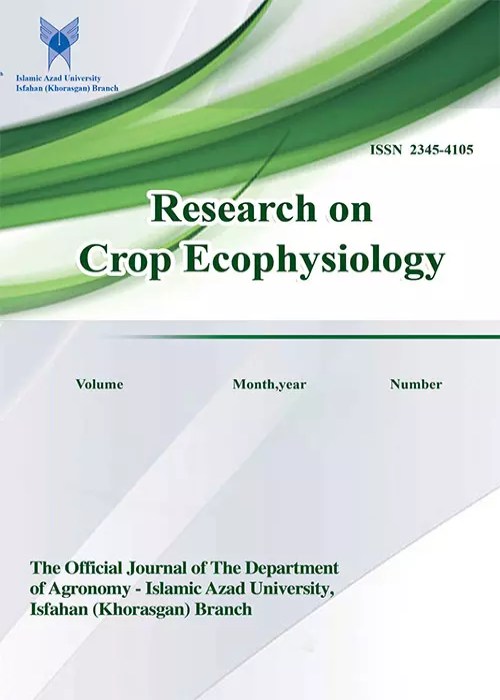Study of Some Biological Aspects and Development of Integrated Pest Management Program for the Safflower Fly, Acanthiophilus helianthi Rossi (Diptera: Tephritidae) in Iran
Author(s):
Abstract:
Acanthiophilus helianthi Rossi (Diptera: Tephritidae) is a pest of safflower and managing it because of its fecundity and concealed larval habitat is a challenge. Potential components of an integrated pest management program for A. helianthi were investigated at the Gachsaran Agricultural Research Station, in southern Iran from November 2008 to July 2009. For the life cycle studies, the infected flower heads were collected from an experimental field plot and were developed from egg to adult under laboratory conditions. The results showed that the first adults emerged gradually in mid April 2009. Female A.helianthi had a pre-oviposition period of 5.8 ± 1.0 days and the average fecundity was 27 ± 3.2 eggs. The eggs were laid in the bracts of flower heads singly or in clusters of 3-18. The Incubation period was 3.8 ± 0.6 days under field conditions and 3.4 ± 0.6 days under cage conditions. Three larval instars occurred, and the larval phase was 7-10 days. Males emerged earlier than females, but the longevity of the adult females (12 ± 3.0) was significantly greater than that of males (8 ± 1.0). Analysis of aggregated male and female sampling data showed that the gender ratio was 1:1.28. To evaluate the efficiency of different methods of fruit fly control on safflower, a field experiment was carried out. Five diverse methods, insecticides, baiting, cultural, Integrated Management and no treatment were assessed on weight of one thousand seeds, percentage of oil, percentage seed damage and harvest/ha. Integrated Management and insecticide control indicated best results with harvest potential of 1850 and 1723 kg/ha with a least damage of 5 and 8%, respectively. Since use of selective insecticides is one of the most important methods for pest management, the efficacy of six insecticides against A. helianthi infesting safflower were evaluated. Among the treatments Endosulfan 35% EC at 0.03% proved more effective followed by Chlorpyriphos and Monochrotophos.
Language:
English
Published:
Journal of Research on Crop Ecophysiology, Volume:7 Issue: 1, 2012
Page:
1
magiran.com/p956481
دانلود و مطالعه متن این مقاله با یکی از روشهای زیر امکان پذیر است:
اشتراک شخصی
با عضویت و پرداخت آنلاین حق اشتراک یکساله به مبلغ 1,390,000ريال میتوانید 70 عنوان مطلب دانلود کنید!
اشتراک سازمانی
به کتابخانه دانشگاه یا محل کار خود پیشنهاد کنید تا اشتراک سازمانی این پایگاه را برای دسترسی نامحدود همه کاربران به متن مطالب تهیه نمایند!
توجه!
- حق عضویت دریافتی صرف حمایت از نشریات عضو و نگهداری، تکمیل و توسعه مگیران میشود.
- پرداخت حق اشتراک و دانلود مقالات اجازه بازنشر آن در سایر رسانههای چاپی و دیجیتال را به کاربر نمیدهد.
In order to view content subscription is required
Personal subscription
Subscribe magiran.com for 70 € euros via PayPal and download 70 articles during a year.
Organization subscription
Please contact us to subscribe your university or library for unlimited access!


